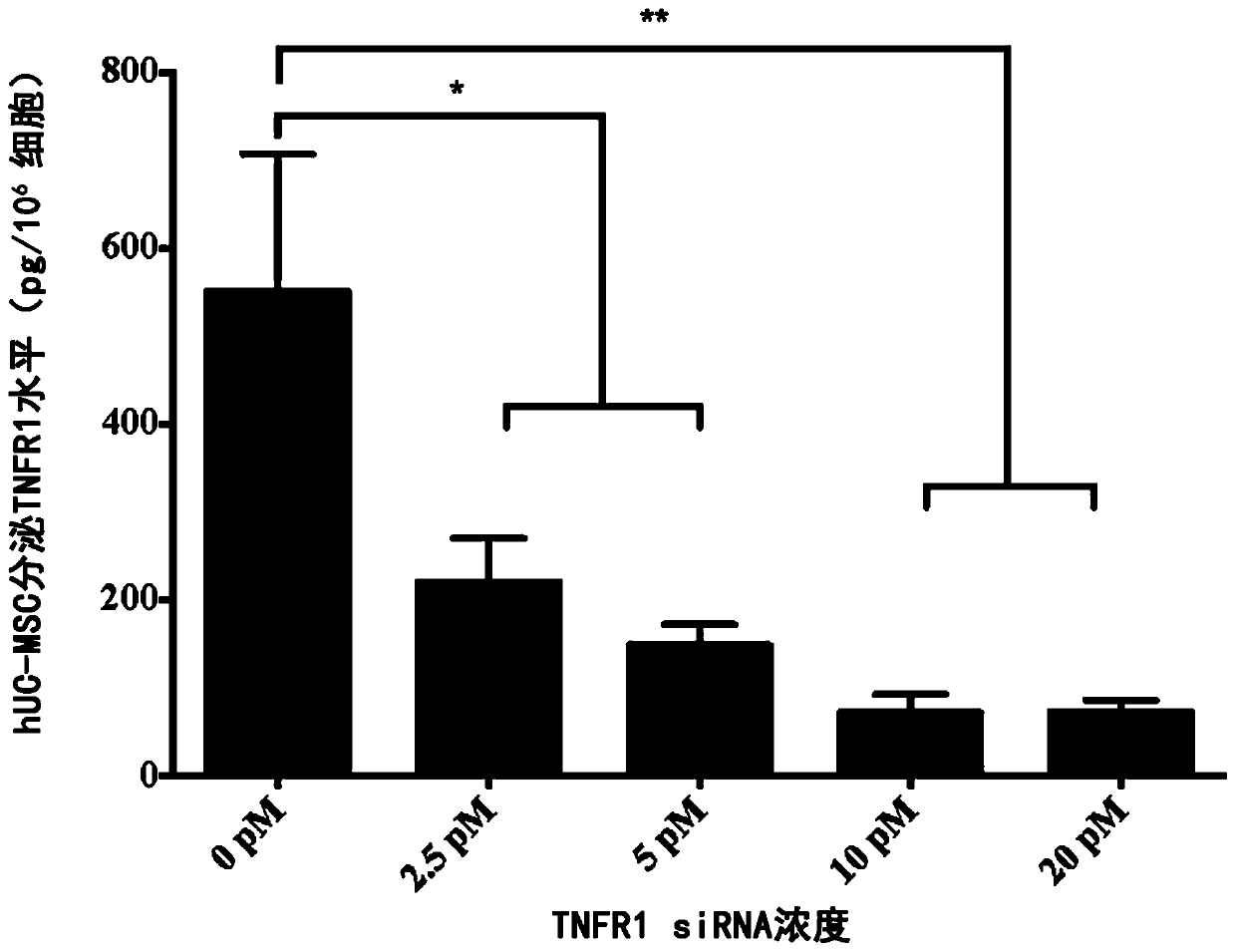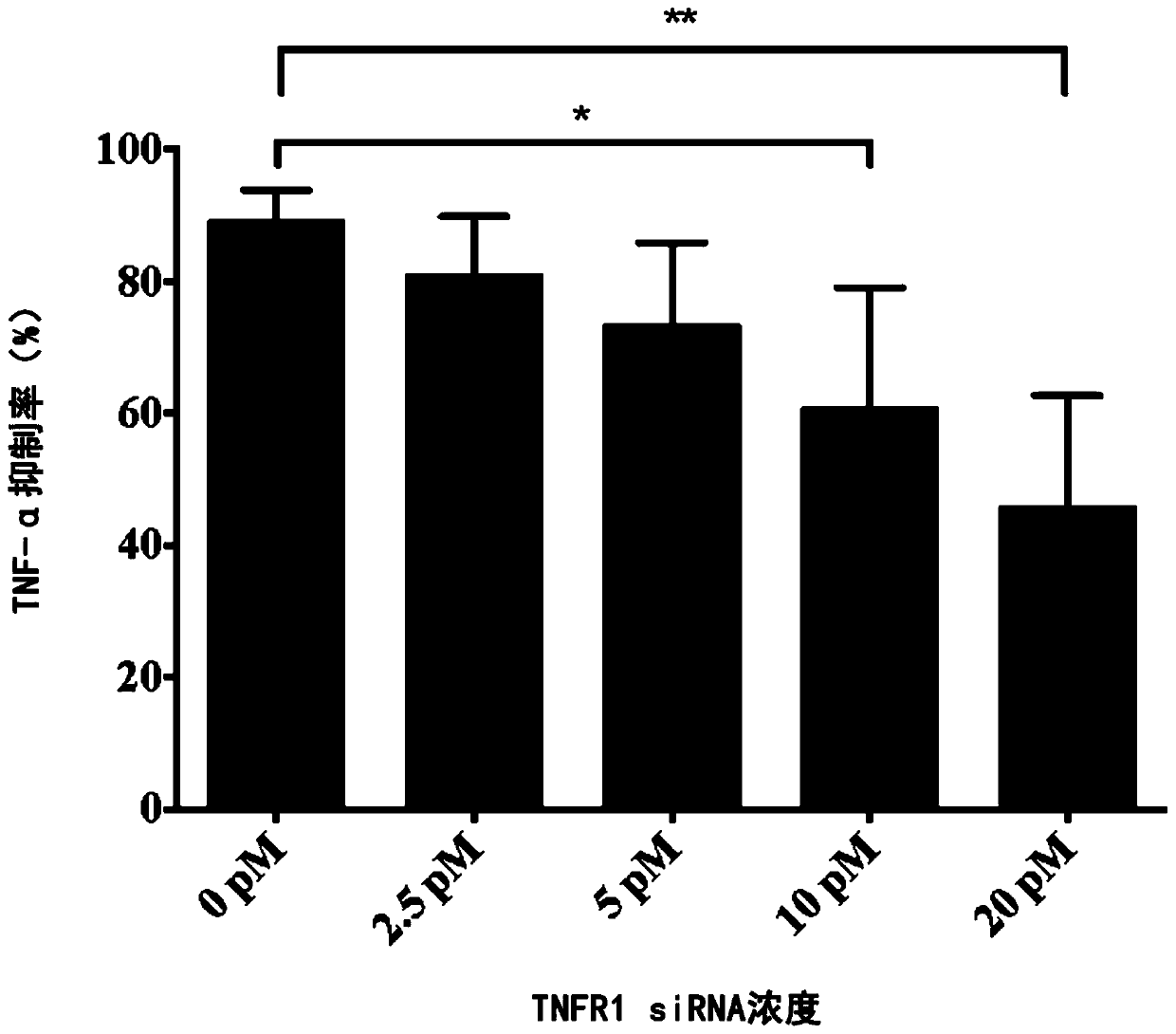Detection method for biological efficacy of mesenchymal stem cells
A stem cell biology, stem cell technology, applied in the field of detection of the biological efficacy of mesenchymal stem cells, can solve the problems of many steps, inconvenient detection, instability, etc., and achieve the effects of good detection means, simple operation, and accurate quantification.
- Summary
- Abstract
- Description
- Claims
- Application Information
AI Technical Summary
Problems solved by technology
Method used
Image
Examples
Embodiment 1
[0057] Example 1 Isolation and cultivation of human umbilical cord-derived mesenchymal stem cells (hUC-MSC)
[0058] Umbilical cord tissue was obtained from a cooperative hospital, and the donor had signed an informed consent. hUC-MSCs were isolated, cultured and expanded from umbilical cord tissue by tissue climbing method.
[0059] The specific method is as follows: select umbilical cord tissue from a healthy donor over 15 cm, cut the umbilical cord tissue into small sections with a diameter of 1-1.5 mm, and inoculate 56 pieces / bottle evenly into T75 culture bottles. Place the culture bottle containing the umbilical cord tissue at 37° C. in a 5% CO incubator for 5-6 hours. After the incubation, add 5 ml of complete cell culture medium (DMEM / F12 (DF12) culture solution plus 10 % fetal bovine serum (FBS)), add 10ml of complete culture medium after overnight culture, after that, change the culture medium every 3-5 days, and carefully observe the level of cells climbing out of ...
Embodiment 2
[0061] Example 2 TNFRI siRNA treatment of hUC-MSC, detection of cell secreted TNFRI level
[0062]TNFRI siRNA (s14266) was dissolved in sterile nuclease-free water to a 10 μM preservation solution. siRNA (s14266, Thermofisher company) and liposome transfection reagent ( RNAi-MAX reagent) for Medium dilution. Each concentration of siRNA was mixed with the same volume of RNAi-MAX for 5 minutes at room temperature, and the final concentration of TNFRI siRNA was adjusted to 0, 2.5, 5, 10 or 20 pM. Prepare parallel plates for cell counting.
[0063] hUC-MSC cells produced under GMP environment from 4 different donor sources were used for analysis: UC001, UC002, UC005 and UC006. The hUC-MSCs were recovered, counted, and seeded in 24-well cell culture plates at a seeding density of 3×104 cells / well. Each batch of cells was cultured in one culture plate (4 culture dishes in total). After culturing the cells overnight, TNFRI siRNA (s14266) at a final concentration of 0, 2.5, 5,...
Embodiment 3
[0067] Example 3 co-culture of hUC-MSC and PBMC, detection of TNF-α
[0068] Human peripheral blood was obtained from healthy donors. Peripheral blood lymphocytes were separated from blood using Ficoll-Paque PLUS reagent, then the cells were washed twice with DPBS, and finally resuspended with RPMI-1640 complete culture medium. After counting PBMC cells, adjust the cell concentration to 1×107 cells / ml. PBMC cells were preactivated with anti-CD3 antibody (final concentration: 1 μg / ml) and anti-CD28 antibody (final concentration: 1 μg / ml), and the preactivated PBMCs will be used for co-culture immediately.
[0069] Count the number of hUC-MSCs (UC001, UC002, UC005 and UC006) cultured in parallel 24-well plates, remove the culture medium from the hUC-MSCs (cells treated with different concentrations of TNFRI siRNA) in each experimental group, and add 200 μL RPMI-1640 to each well The culture medium was completed; the preactivated PBMCs were added to each hUC-MSC experimental we...
PUM
| Property | Measurement | Unit |
|---|---|---|
| diameter | aaaaa | aaaaa |
Abstract
Description
Claims
Application Information
 Login to View More
Login to View More - Generate Ideas
- Intellectual Property
- Life Sciences
- Materials
- Tech Scout
- Unparalleled Data Quality
- Higher Quality Content
- 60% Fewer Hallucinations
Browse by: Latest US Patents, China's latest patents, Technical Efficacy Thesaurus, Application Domain, Technology Topic, Popular Technical Reports.
© 2025 PatSnap. All rights reserved.Legal|Privacy policy|Modern Slavery Act Transparency Statement|Sitemap|About US| Contact US: help@patsnap.com



